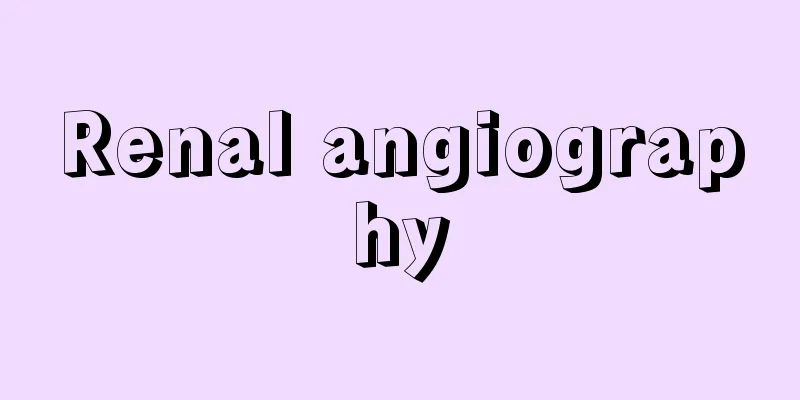Renal angiography

|
A nephrogram is an imaging test that can be used to observe the condition of the urinary system and the blood flow to the kidneys. For the test, a radiologist injects contrast dye into the arteries that carry blood to your kidneys. X-ray images are then used to watch the dye flow through the blood vessels in the kidneys. X-rays use small amounts of radiation to create images of bones and internal organs. A nephrogram is an X-ray. Fluoroscopy is a type of X-ray. Renal angiography is the process of presenting images of the renal pelvis, ureter, bladder and other urinary system organs by using medical imaging equipment. In the early days of the popularization of X-ray examination equipment, contrast agents were generally introduced to achieve high-density images of the urinary system to distinguish it from other parts. With the increasing clinical application of imaging techniques such as CT and MRI and interventional surgery, the frequent use of contrast agents will cause a new disease, namely "contrast-induced nephropathy". The term contrast-induced nephropathy may be quite unfamiliar to most patients. It refers to acute kidney injury (serum creatinine level increases by 25% compared with the baseline value) occurring within 2 to 3 days after the use of contrast agent, excluding other causes. The clinical symptoms of contrast-induced nephropathy are generally mild. Most patients do not show oliguria and the disease improves on its own after a week. It is easy to be missed in clinical practice, and diagnosis mainly relies on hematological examinations. However, some patients may experience symptoms such as oliguria, anuria, rash, anaphylactic shock, and even a sharp deterioration in renal function requiring dialysis treatment. Currently, the diagnosis of contrast-induced nephropathy is believed to include the following points: 1. There is a clear history of exposure to contrast media. 2. Rule out other possible causes of acute kidney injury such as hypovolemia, infection, shock, use of kidney-damaging drugs, etc. 3. After exposure to contrast agent, recheck the blood creatinine level to see if it has increased by 25% compared to the baseline value. Advanced age, pre-existing kidney diseases (such as renal insufficiency, nephrotic syndrome, etc.), hypotension, anemia, diabetes, chronic heart failure, and insufficient blood volume are all high-risk factors for contrast-induced nephropathy. Therefore, the use of contrast agents should be avoided as much as possible in these patients. For high-risk patients who have already used contrast agents, renal function needs to be closely followed up, and contrast-induced nephropathy should be treated promptly once it is discovered. So, how to prevent and treat contrast-induced nephropathy? Selection and dosage of contrast agents: Try to choose contrast agents that cause less damage to the kidneys, such as non-ionic contrast agents are better than ionic contrast agents. In addition, try to reduce the number of times contrast agents are used, extend the interval between two contrast agents, and reduce the dose of contrast agents used in a single session. Hydration is currently recognized as an effective method to prevent contrast-induced nephropathy. It can excrete contrast agents faster, reduce their deposition in the kidneys, and correct the volume deficiency in some patients. In addition, intravenous infusion of sodium bicarbonate to alkalize urine also has a certain therapeutic effect. Avoid using drugs that damage the kidneys. Some drugs that can cause kidney damage, such as non-steroidal anti-inflammatory drugs, aminoglycosides and other antibiotics, should be avoided as much as possible. Other treatments: Drugs such as N-acetylcysteine, prostaglandin E1, and theophylline may be effective. Patients with oliguria who do not respond well to drug treatment may be given dialysis as a transition. In addition, hemofiltration can also be used as a method to prevent and treat contrast-induced nephropathy. The key to contrast-induced nephropathy is prevention. For patients with high-risk factors, the use of contrast agents should be avoided as much as possible. If contrast examination must be performed after weighing the pros and cons, the predisposing factors should be actively corrected before the examination, contrast agents with low nephrotoxicity should be used, and hydration therapy should be given. Monitor blood creatinine levels promptly after angiography to achieve early diagnosis and timely intervention. |
<<: Thyroid ultrasound angiography
Recommend
What does Grain in Ear mean and when does it occur?
Among the songs about the twenty-four solar terms...
Test whether you are in sub-health status
Compare the following symptoms and test whether y...
8 major danger signs of brain cancer
Brain cancer refers to a malignant tumor that occ...
How long after the first fetal movement does it take for the next one to happen?
Mothers who are pregnant will feel very happy and...
What are the causes of acne in different places
In modern life, people's pace of life has bec...
Can I drink overnight ginger water?
Ginger water can be said to be a health drink. It...
What to do if your feet are itchy?
Many people often experience itchy feet due to ho...
What is the best way to make tea with roses
Rose is a common plant in our life. Rose can not ...
How long is the appropriate time to steam in a sauna
The history of sauna is very long, and it mainly ...
Can eating food eaten by people with skin cancer be contagious?
Will eating food eaten by people with skin cancer...
What are the staging symptoms of nasopharyngeal carcinoma? Is the survival rate of nasopharyngeal carcinoma high?
What are the symptoms of nasopharyngeal cancer by...
What issues should be paid attention to in the diet of bladder cancer?
If bladder cancer patients are found early, under...
What to do if you have sores in your nose
Diseases rarely occur in the nose, but some peopl...
The fastest way to reduce swelling is to use eggs, is it effective?
Running around outside every day, it is inevitabl...
Being lazy at this time can lead to four serious illnesses
1. Bladder cancer caused by not being able to go ...









